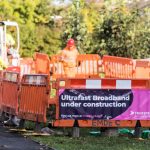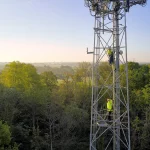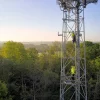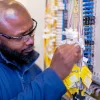Openreach Trial SRA On UK FTTC Superfast Broadband Lines Again UPDATE
Openreach (BT) has announced that they intend to conduct a new Proof of Concept (PoC) to test the impact of applying Seamless Rate Adaption (SRA) to their 40-80Mbps capable VDSL2 based Fibre-to-the-Cabinet (FTTC) broadband lines, which could help to keep such lines stable.
At this point anybody familiar with SRA will possibly raise a wry smile, after all it’s not the first time that Openreach have tried to adopt it and indeed it’s already been implemented on their new hybrid-fibre G.fast service. The operator also tried to adopt it as part of their Long Reach VDSL (LR-VDSL) trial but that has now been shelved (here).
Prior to that the last time that we saw SRA being attempted on Openreach’s hybrid fibre VDSL2 tech was as part of their Vectoring trials between 2014 and 2015 (vectoring is designed to remove crosstalk interference and thus improve performance), which ran into a fair few development challenges and only ever resulted in a highly targeted deployment of Vectoring (the SRA component of that trial was not a big problem).
Advertisement
SRA helps to keep lines stable by varying the speed more effectively. A more technical explanation is to say that SRA can be used to “reconfigure the total data rate by modifying the framing parameters and the bits and fine gains parameters“. If the noise condition improves then SRA can be used to gradually increase the data rate again, potentially taking it all the way back up to what you had before a nasty bit of sudden noise impacted the line.
The good news is that Openreach are going to try SRA on VDSL2 again, albeit this time by itself rather than alongside Vectoring or any other more dramatic changes. Took them long enough.
This briefing is to inform CPs that we’ll be testing the impact of applying Seamless Rate Adaption (SRA) on FTTC VDSL2
SRA will vary the speed of a line as noise margin changes, whereas today on NGA1, if the noise margin drops beyond a certain threshold, the line will retrain. Openreach will be running a proof of concept to prove the benefits of this change.
As usual the full briefing is private but we should be able to add some extra details soon, although there’s not a lot more that needs to be written about SRA. Hopefully this is one change that can be introduced without creating new headaches for Openreach’s ECI based kit (their Huawei kit usually doesn’t have quite so many problems). SRA has been around for awhile and is fairly well understood.
UPDATE 5:19pm
Advertisement
We understand from ISPs that the trial will take place on just 200 lines via Huawei cabinets, which will start around mid-May and run until the end of June 2018. Apparently the trial will mostly involve Openreach’s own employees and their Network Operations Centre will then apply SRA line by line (Dynamic Line Management (DLM) will also be disabled).
Assuming all goes well then the prospect exists for a larger trial of around 100,000 lines, which could begin around September and run until the end of this year.
Mark is a professional technology writer, IT consultant and computer engineer from Dorset (England), he also founded ISPreview in 1999 and enjoys analysing the latest telecoms and broadband developments. Find me on X (Twitter), Mastodon, Facebook, BlueSky, Threads.net and Linkedin.
« Community Fibre and Virtua UK Begin FTTP Partnership in London
















































Comments are closed